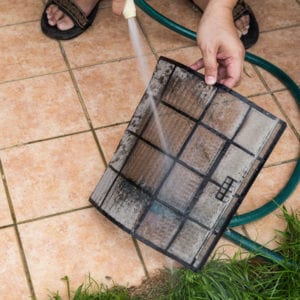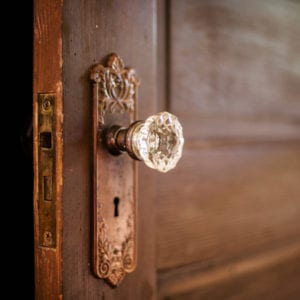5 Steps to Securing Your Home for Summer Vacations
If there’s one upside to this scorching-hot weather, it’s the excuse to escape the city for a summer vacation. But don’t forget to secure your home for the summer before you go!
These tips will help give you peace of mind that your house and home comfort system are safe and secure while you’re away.
1. Remove Your Home Address from Your GPS
Does your GPS device or mobile phone app have a “Go Home” button? If so, anyone who has access to the device can discover where you live.
And if they ‘find’ it your bag or vehicle at the airport, they also know you aren’t home.
Be sure to remove your home address from GPS apps or devices before you hit the road. Otherwise, leave them at home.
2. Install a Smart Wi-Fi Thermostat
In just a few short years, smart thermostats have grown from a high-tech niche to a must-have device for millions of Canadian homes.
One of the benefits of a smart thermostat is that it allows you to monitor the status of your home remotely. That’s great news for summer travellers, since it lets you know if something goes wrong with the air conditioning while you’re away.
With the help of a smart thermostat (and a friend or neighbour to let in the technicians), you can arrange an emergency air conditioner repair in Toronto from a campsite up north or a beach down south.
3. Turn the Thermostat Up to Save Energy (But Only a Bit)
Turning the thermostat up when nobody’s home is the most tried-and-true ways to save energy in the summer. However, we do not recommend shutting off the air conditioning entirely.
In addition to keeping the house cool, central air conditioning also regulates the humidity inside your home. Fluctuating humidity levels can damage your home in numerous ways:
- Causes wood to shrink and expand, which can damage wood floors and furniture
- Leaves moisture on the outside of pipes, causing rust
- Spurs the growth of mold, mildew and dust mites
Turn the thermostat up just a few degrees while you’re away. You’ll save energy and keep your home safe from humidity hazards.
4. Put Mail on Hold
If your trip lasts more than a few days (and your house still gets home mail delivery), your mailbox could quickly fill up with flyers and bills. This poses two potential problems: first, it tells onlookers that you’re away from home, and second, it leaves you vulnerable to mail theft.
Here in Ontario, you can stop mail delivery to your house for a time by purchasing a mail hold from Canada Post. You must do this at least five business days before the date you want to mail to stop. For newspapers, you will have to call the person or company responsible for delivery.
You could also ask a neighbour to collect the mail and newspapers for you.
5. Leave Signs of Life, Even Though You Aren’t Home
There are many ways a potential burglar could catch on to an empty house: no lights, tall grass, empty driveway, and untouched newspapers, to name a few. You can secure your home against all these issues with a bit of ingenuity and some from your friends and neighbours.
- Put a few indoor lights on timers so they will turn on for a few hours at night. In addition to the traditional plug-in timers with a dial, you can now find Wi-Fi-enabled “smart lighting” that can be adjusted using a mobile app.
- Have a friend or neighbour mow your lawn once a week, so the grass doesn’t grow too tall. You could also hire a landscaper.
- Ask a neighbour on your street to park their car in your driveway while you’re on summer vacation. They can collect your unread newspaper at the same time.
Image: maximkabb




